The occupational therapist and professor at the University of Burgos, Olalla Saiz, explains in this article, together with several of her students, how to carry out an intervention with NeuronUP in people affected by Down syndrome.
Objectives of the intervention in people with Down syndrome
The main objective is to improve memory in adults with Down syndrome through activities using the NeuronUP program.
In addition, a series of specific objectives are proposed:
- Stimulate working memory.
- Enhance long-term memory, specifically episodic memory.
- Improve semantic memory.
Cognitive session to improve memory in people with Down syndrome
The group to be worked with are adults with Down syndrome aged between 20 and 40 years.
The session is aimed at a group of 10 people. The instrument used to evaluate the group is the WAIS-III (Wechsler Adult Intelligence Scale). It is responsible for examining the measure of intelligence: General Intelligence Quotient, Verbal and Executive Quotient (Verbal Comprehension, Perceptual Organization, Working Memory and Processing Speed).
The scale was administered and a low average score was obtained. Regarding cognitive functions, it was observed that memory was affected, especially working memory. Therefore, this area is addressed in a 60-minute session divided into 4 activities.
To carry out the memory intervention in people with Down syndrome, the following NeuronUP activities have been selected:
1. Sort the words alphabetically
This generator consists of alphabetically ordering a list of words.
In this case the activity has two game modes; free mode and correction mode. For this group, correction mode will be chosen so that the participants notice their mistakes and can correct them. Using this mode grants 3 lives.
- Objective: improve semantic memory and stimulate working memory.
- Duration: the duration of the activity will be 15 minutes. During this time the user will perform the activity as many times as they can.
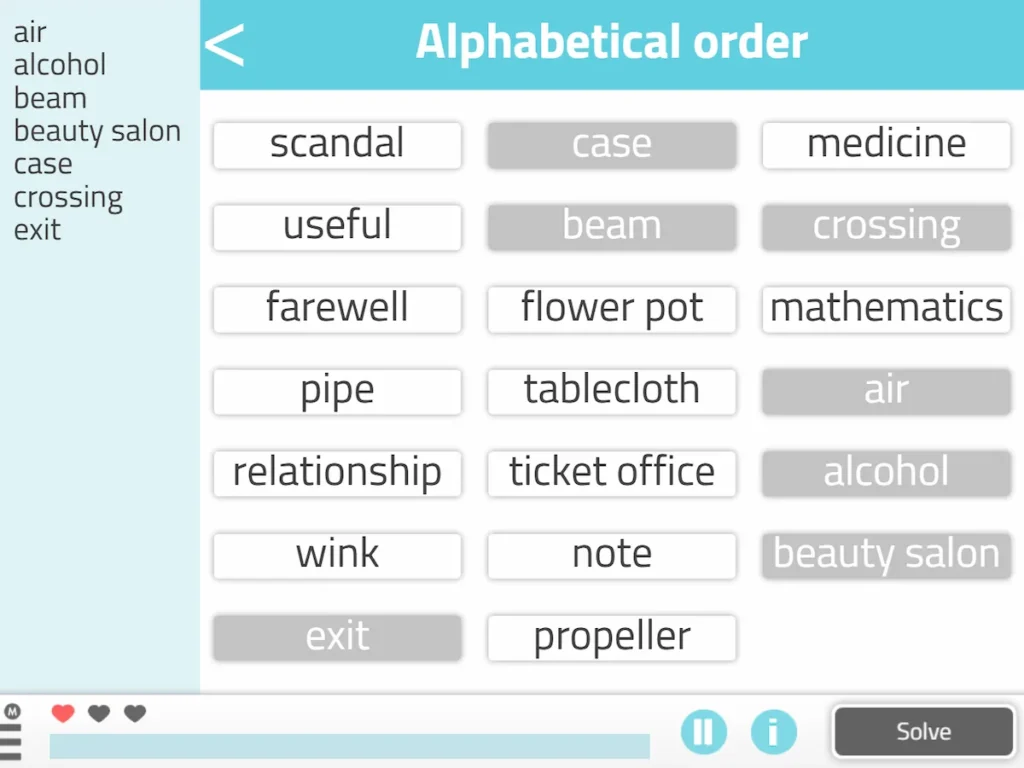
2. Match the Cards
This game consists of finding pairs of cards that are face down. It has 3 levels (easy, medium and hard) with 3 sublevels within each. Level medium number 5 will be implemented.
- Objective: to enhance long-term memory, specifically episodic memory.
- Duration: in this case, an unlimited time can be set or the default time that exists for the chosen level and sublevel can be kept. Therefore, 15 minutes will be set to perform the activity, allowing its repetition within the stipulated time.
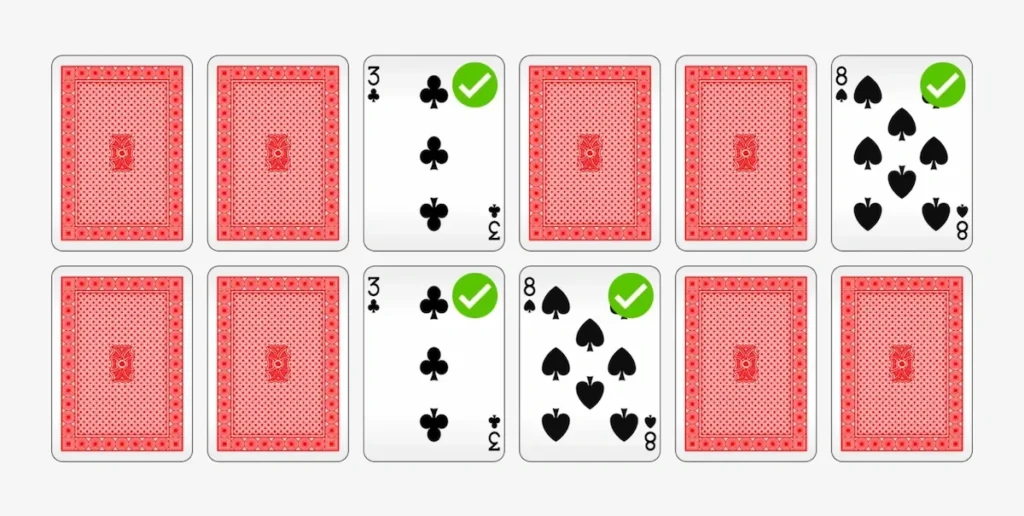
3. Home Delivery
The game consists of remembering the order in which the buildings light up and reproducing it in reverse. This activity has 9 phases or levels. In addition, it offers the possibility of carrying it out with time or without it. On the other hand, if a certain period of inactivity is reached, a warning will pop up.
In this case the game will start at phase 5, that is, intermediate level, advancing and moving up levels if completed successfully, or descending if mistakes are made.
- Objectives: stimulate and enhance long-term memory, specifically episodic memory.
- Duration: the time set for this activity is 15 minutes, with each user being able to play several times within the allotted time.
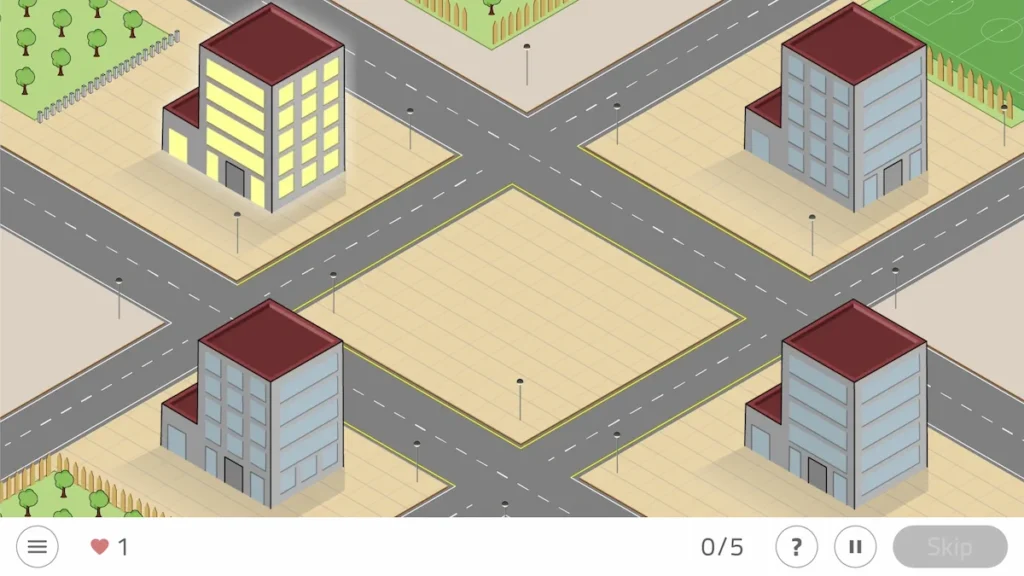
4. Organization by Categories
This generator consists of ordering items with their corresponding categories. The activity has two game modes, correction mode and free mode. Likewise, it increases users’ motivation by granting 3 lives, which allows greater flexibility in errors, increasing the margin for mistakes. It is advisable to use correction mode since it shows the errors and in this way users learn from them.
- Objective: to improve semantic memory
- Duration: the time to perform the activity is 15 minutes and they can carry it out as many times as possible within that time frame.
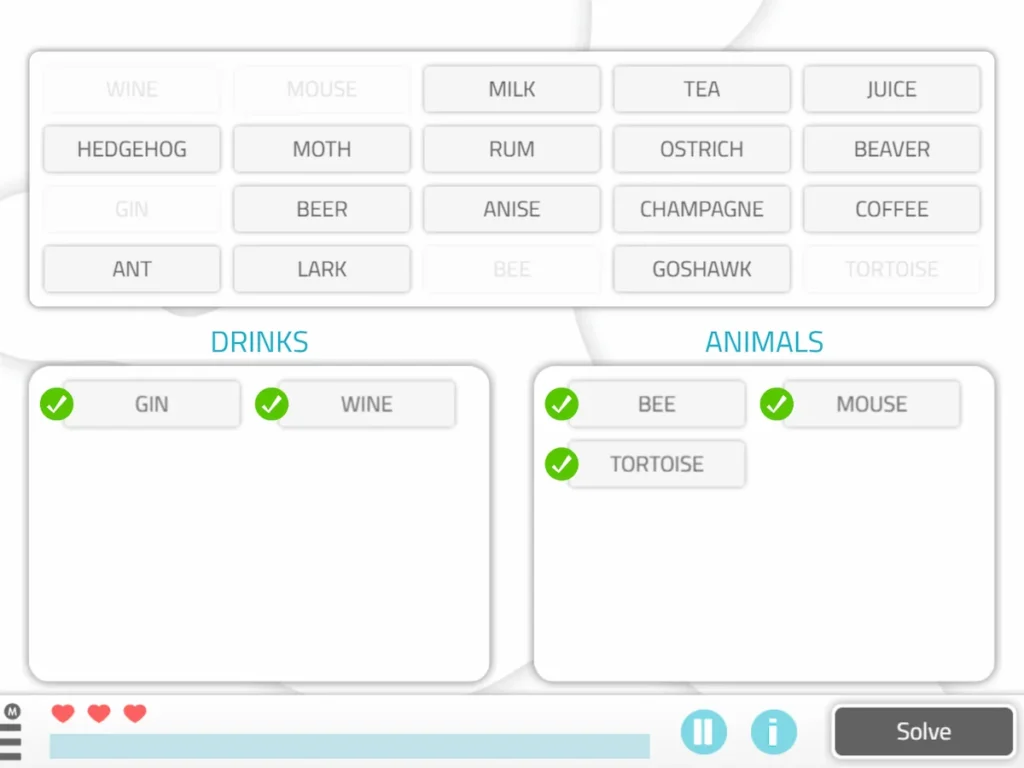
Conclusion on the intervention with NeuronUP in people with Down syndrome
The design of the intervention has been carried out using the leading cognitive rehabilitation platform NeuronUP. It allows an intensive and personalized intervention for each user. NeuronUP has a wide variety of activities that are very useful when carrying out a session of functional cognitive rehabilitation. These activities can be customized according to each person’s needs, so they are aimed at the specific user with whom one intends to work.
Specifically, the session we have carried out is aimed at adults with Down syndrome, and focuses specifically on memory and its types. In this case each user will have a computer to perform it individually, so that each can follow their own pace within the time set for each activity. In this way, the level of stress and frustration will be minimized.
If they have any doubts, they can count on the help of the Occupational Therapist, who will give them a series of cues so that they can successfully complete the activity. In addition, if the level is too difficult or, on the contrary, it is easy for them, the difficulty in some activities can be adjusted to meet the user’s needs.
Bibliography
- – WAIS-III – Wechsler Adult Intelligence Scale – University of Lima [Website]. Ulima.edu.pe. 2020 [updated December 1, 2020]. Available at: https://www.ulima.edu.pe/pregrado/psicologia/gabinete-psicometrico/wais-iii-escala-de-inteligencia-de-wechsler-para-adulto.
- NeuronUP, cognitive stimulation and neurorehabilitation [Website]. Neuronup.com. 2020 [updated December 1, 2020]. Available at: https://neuronup.com/es/
- Saiz O. Software para PC como herramientas de intervención cognitiva – Terapia Ocupacional en los Trastornos Cognitivos [Website]. Ubuvirtual.ubu.es. 2020 [updated December 1, 2020].
In addition to Olalla Sáiz, Mireya Platas Gutiérrez, Claudia Quintanilla Rivera, Julene Rojo Rodríguez and Lía Urcola López have contributed to the preparation of this article.
If you liked this post about how to carry out a intervention in people with Down syndrome, we recommend that you take a look at these publications from NeuronUP:
“This article has been translated. Link to the original article in Spanish:”
Intervención con NeuronUP en personas con síndrome de Down
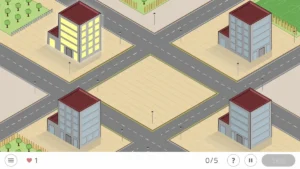
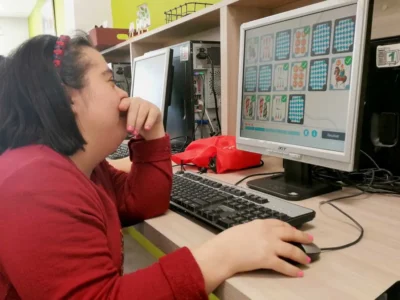
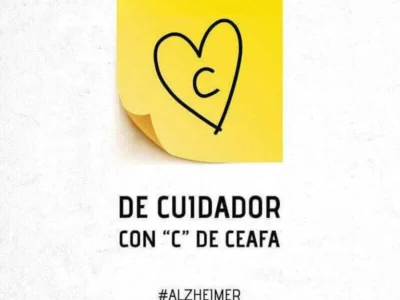
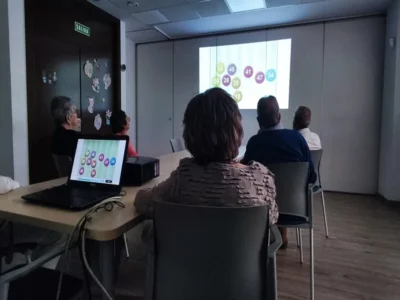
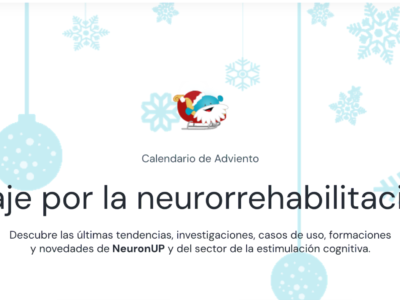


 8 activities to rehabilitate visuo-spatial skills
8 activities to rehabilitate visuo-spatial skills
Leave a Reply